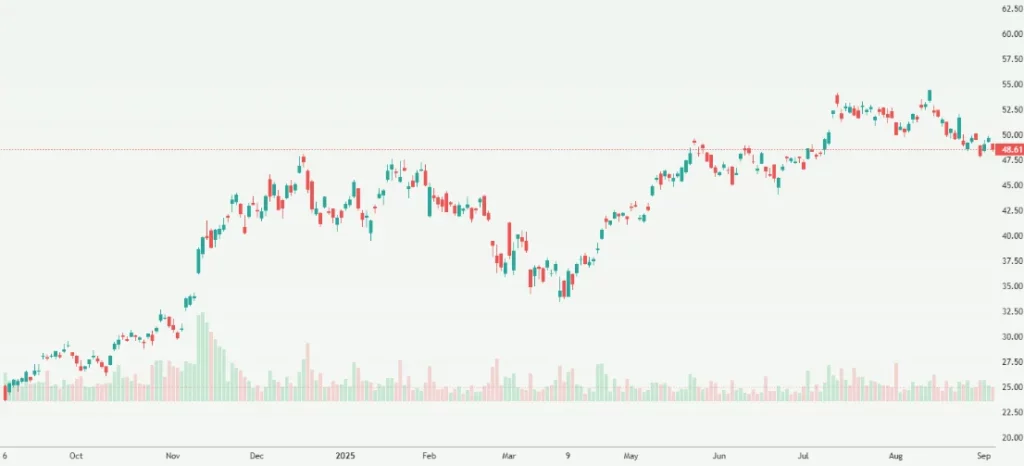Bitcoin Price Today Surges to $111.5K as Altcoins Struggle Ahead of Payrolls Data
The Bitcoin price surged past $111,500 today, marking a sharp rise that caught the attention of global investors. While Bitcoin continues to dominate the crypto space, many altcoins are struggling to keep up. This movement comes ahead of the upcoming U.S. payrolls data, which often influences broader market sentiment.
The latest rally has once again placed Bitcoin in the spotlight as traders and institutions look for signals on where digital assets may head next.
Bitcoin’s Strong Momentum
Bitcoin’s price rally reflects a renewed appetite among investors for risk assets, despite ongoing global economic uncertainty. As the largest cryptocurrency by market value, Bitcoin often acts as a benchmark for the entire digital asset sector.
The move past $111,500 suggests strong demand from both institutional and retail investors. For some, this is a sign of growing confidence in digital currencies as an alternative to traditional assets. For others, it represents speculation fueled by short-term momentum trading.

The surge has also widened the gap between Bitcoin and other cryptocurrencies. While Bitcoin gains, many altcoins are under pressure, with weaker performance compared to the flagship digital currency.
Why Altcoins Are Struggling
Altcoins often move in the same direction as Bitcoin, but they tend to experience higher volatility. In recent weeks, many altcoins have faced challenges due to:
- Investor preference for stability: During times of economic uncertainty, traders tend to concentrate funds in Bitcoin instead of smaller tokens.
- Lack of liquidity: Altcoin markets are generally thinner, leading to sharper drops when selling pressure increases.
- Regulatory pressures: Some altcoins remain under scrutiny by regulators, creating uncertainty about their long-term prospects.
This dynamic highlights the dominance of Bitcoin in the broader crypto market. While Bitcoin is sometimes compared to gold as a store of value, many altcoins are still viewed as experimental projects with higher risks.
Impact of U.S. Payrolls Data
The upcoming U.S. non-farm payrolls data is one of the most closely watched economic indicators in the stock market. It provides insights into employment trends and can affect monetary policy decisions by the Federal Reserve.
When payroll numbers show strong job growth, it often leads to expectations of tighter financial conditions, which can weigh on risk assets, including cryptocurrencies. Conversely, weaker data may encourage expectations of looser monetary policy, which tends to support assets like Bitcoin.
Traders are watching this week’s payroll release closely, as it could influence whether Bitcoin can hold above the $111,500 level or face a pullback.
Bitcoin in the Broader Market Context
The Bitcoin price surge also aligns with broader market shifts. Equity markets have shown resilience, with investors balancing concerns about inflation, interest rates, and global growth. Meanwhile, some investors are diversifying into digital assets as a hedge.
This trend mirrors patterns seen in other investment classes. For example, just as investors use stock research to analyze companies and track AI stocks for growth potential, many now apply similar strategies to the crypto space. Bitcoin’s dominance and relatively stronger performance compared to altcoins make it the focal point of such research.
Institutional Interest Remains Strong
Institutional involvement in Bitcoin continues to expand. Large financial institutions, hedge funds, and even publicly traded companies have increased their exposure to digital assets. This growing participation has been one of the driving forces behind Bitcoin’s sustained momentum.
Some institutions view Bitcoin as a hedge against inflation, while others see it as a speculative but promising long-term investment. Regulatory clarity in regions such as the U.S. and Europe will likely play a key role in shaping how far institutional adoption can go.
Investor Strategies in the Current Market
With the Bitcoin price surging while altcoins face difficulties, investors are rethinking their strategies. Some are choosing to consolidate their holdings into Bitcoin, while others are selectively holding altcoins with strong development teams and real-world use cases.
Long-term investors often take a broader perspective, comparing the crypto market with traditional investments in equities, AI stocks, or commodities. They balance risks by diversifying across multiple asset classes, ensuring they are not overexposed to crypto volatility.
Future Outlook for Bitcoin and Altcoins
Looking ahead, the performance of Bitcoin will depend on several factors:
- Macroeconomic conditions – Data such as payrolls, inflation, and interest rates will heavily influence investor appetite.
- Regulatory clarity – Clearer guidelines could support further institutional adoption.
- Market sentiment – Retail traders and crypto communities still play a key role in driving momentum.
While Bitcoin is enjoying strong momentum, altcoins need positive catalysts to recover. For now, Bitcoin’s role as the leader of the digital asset market remains unchallenged.
Conclusion
The surge in the Bitcoin price to $111,500 highlights the ongoing strength of the leading cryptocurrency, even as altcoins struggle to keep pace. Ahead of the U.S. payrolls data, traders are closely monitoring both traditional markets and crypto movements.
For investors, Bitcoin continues to represent both opportunity and risk. Its long-term role in the global financial system is still evolving, but the latest surge underscores its ability to capture investor attention and capital.
FAQs
1. Why is the Bitcoin price rising today?
Bitcoin is rising due to increased investor demand, institutional interest, and speculation ahead of U.S. payrolls data.
2. Why are altcoins not performing as well as Bitcoin?
Altcoins struggle with weaker liquidity, higher volatility, and ongoing regulatory concerns, making Bitcoin a safer choice for many investors.
3. How does payroll data affect Bitcoin?
Payroll data impacts investor expectations about economic conditions and monetary policy. Strong data may weaken Bitcoin, while weaker data may support it.
Bitcoin is rising due to increased investor demand, institutional interest, and speculation ahead of U.S. payrolls data.
Altcoins struggle with weaker liquidity, higher volatility, and ongoing regulatory concerns, making Bitcoin a safer choice for many investors.
Payroll data impacts investor expectations about economic conditions and monetary policy. Strong data may weaken Bitcoin, while weaker data may support it.
Disclaimer:
This content is made for learning only. It is not meant to give financial advice. Always check the facts yourself. Financial decisions need detailed research.






